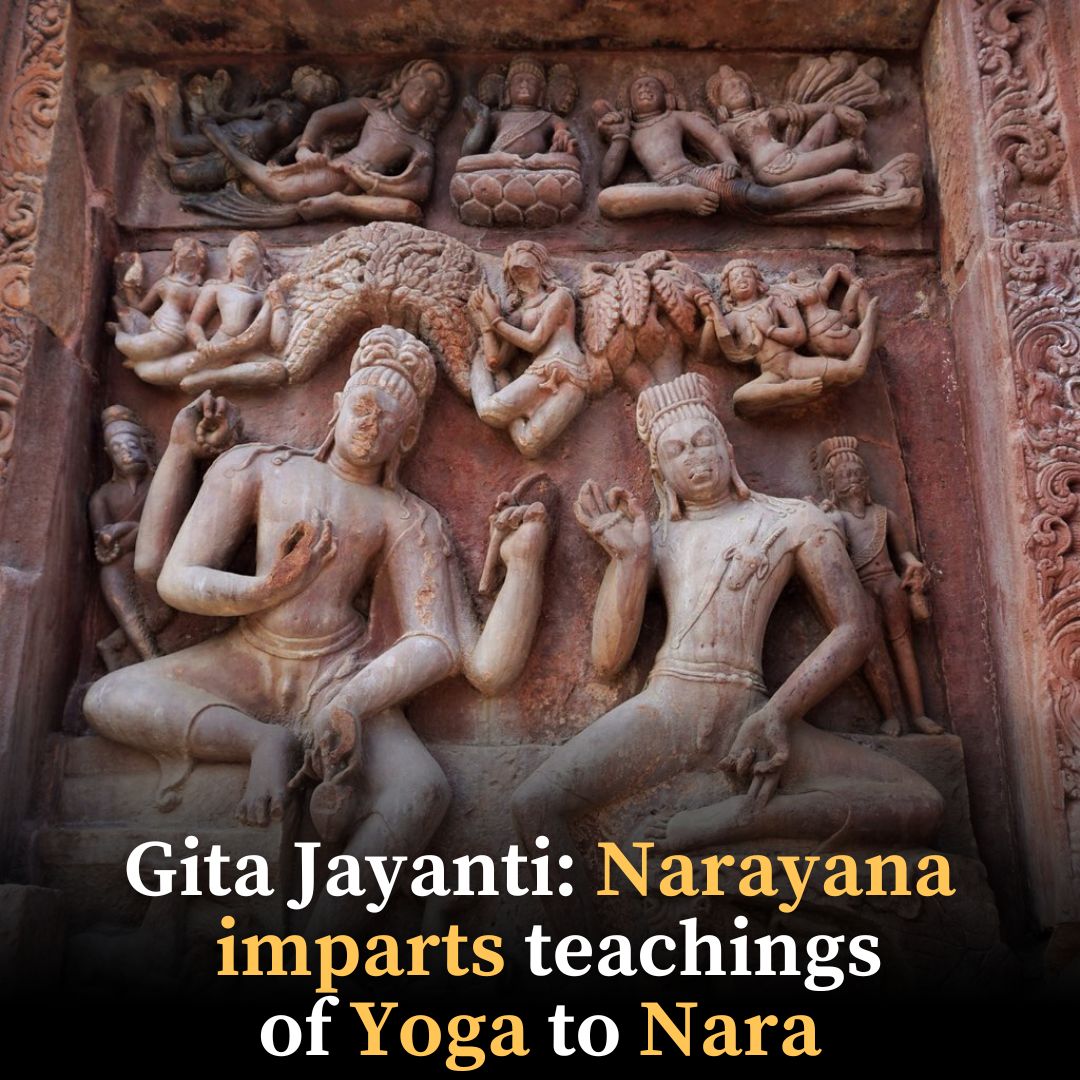Gita Jayanti is observed on the Ekadashi before the full moon during the Hindu Lunisolar month of Margashirsha. The 700 verses of this text (teachings of Krishna to Arjuna) summarise the Upanishads, the philosophical section of the Vedas. Contained in the 6th book of the Mahabharata; the Bhagavat Gita carries the essence of Samkhya, Bhakti, Karma, Jnana and other Hindu philosophies.
About the Image: A 5th century sculpture of Nara-Narayan Bhagavan on the walls of the Dashavatar temple (Deoghar, UP – India). Nara-Narayan are incarnations of Vishnu as twin Rishis, who appeared to impart the teachings of Yoga to humanity. Nara (right) is the embodiment of the human who strives to realise the truth. Narayana (left) is the form of the absolute divine who eternally accompanies Nara as his friend and guide, helping him to realise his own inherent divinity.
Narayana imparts his teachings to Nara in Badrikashrama, a divine realm deep in the Himalayas, that can only be accessed by enlightened Yogis. To enable ordinary humans in this current day and age to benefit from their teachings, Nara and Narayana were incarnated as Arjun and Krishna. Instead of the serene backdrop of Badrikashrama, Krishna (Narayana) imparts his teachings to Arjun (Nara) on a battlefield; a context which reflects the mental, emotional and social conflicts of contemporary society.
Gita Jayanti: Narayana imparts teachings of Yoga to Nara

